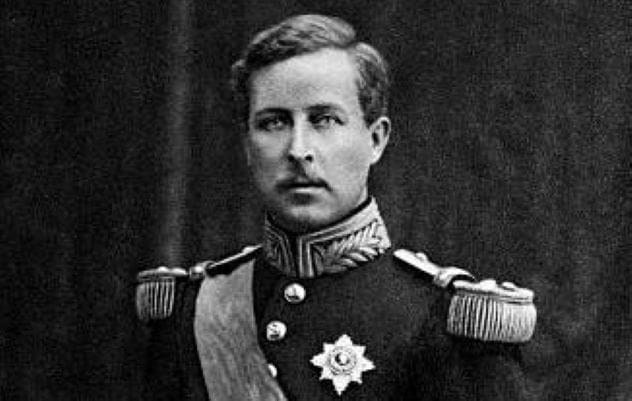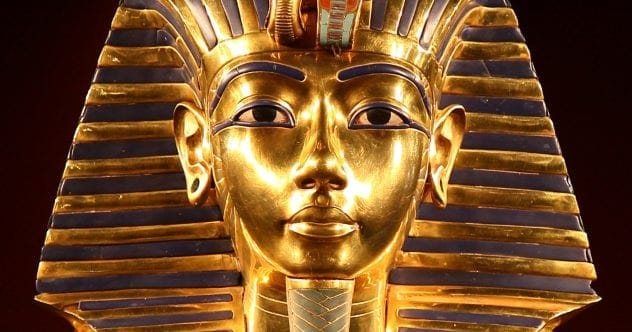We often think of history as a closed book, easily read and understood. Yet, history is full of unsolved mysteries, frustrating historians. However, advances in science are constantly shedding light on these enigmas, revealing more about our past.
Here are ten royal mysteries that have been solved or better understood through the application of science.
The Romanovs
For three centuries, the Romanov family ruled Russia. They enjoyed luxury and power until 1917 when Tsar Nicholas II was forced to abdicate amidst World War I losses and a desire for change. The Bolsheviks captured him and his family, moving them to Yekaterinburg where they disappeared in 1918.
Initially, Soviet leaders announced Nicholas II’s execution but remained vague about his family’s fate, leading to rumors of survival. Many individuals later claimed to be missing Romanovs.
In 1991, the remains of several family members were discovered. DNA studies confirmed their relationship, but to prove they were the Romanovs, scientists needed more. They sampled DNA from other royals, including Prince Philip, a grand-nephew of Alexandra Romanov, which positively identified most of the missing family. However, the bodies of Alexei and Anastasia were missing. [1]
Anastasia
Anna Anderson was the most famous Romanov imposter. In 1920, a young woman attempted suicide in Berlin. Rescued and hospitalized, she refused to identify herself, becoming known as “Miss Unknown.”
Another patient thought she resembled Tatiana, a missing Russian princess, but those familiar with the Romanovs disagreed. Some began to believe she was Anastasia, and she took the name Anna Anderson. While some were convinced, others called her an adventuress and hysteric.
Over decades, Anna Anderson fought for her rights to the Romanov fortune but failed to convince everyone. The mystery was only definitively solved after her death.
The Romanov bodies were recovered, and DNA comparisons proved Anna Anderson wasn’t related. She was identified as Franziska Schanzkowska, a Polish factory worker. In 2007, two more bodies with Romanov DNA were found, accounting for all the missing royals. [2]
Richard III
Richard III is remembered as a villainous king, believed to have murdered his nephews, the Princes in the Tower, to seize the throne. Edward V disappeared at age 12, allowing Richard to become king.
Richard III’s reign was short. He died at the Battle of Bosworth Field fighting Henry Tudor. After his defeat, his corpse was treated with contempt. Historical accounts mention his body being “contemptuously bestowed under the end of Bow-Bridge.”
Historians identified a potential burial site in Leicester but lacked resources to excavate it fully. They dug up just 1% of the area and, incredibly, found bones on the first day. DNA confirmed they were the lost king.
Examining the bones revealed Richard III had scoliosis but wasn’t a hunchback as portrayed. While the fatal wound remained unknown, his body was severely mutilated around death. [3]
Delphine Boël
Some royal mysteries are recent. In 1999, an unauthorized biography of Queen Paola of Belgium hinted that King Albert II had fathered an illegitimate daughter decades earlier. Delphine Boël was soon identified as this potential daughter.
The King alluded to these claims, recalling a past crisis with the Queen but refused to confirm the rumors.
Delphine sought paternity confirmation through a court order, compelling Albert II to provide a DNA sample under threat of a €5,000 daily fine. The DNA proved she was his daughter, granting her the title of Princess of Belgium. Today, she is known as Her Royal Highness Princess Delphine Michèle Anne Marie Ghislaine de Saxe-Cobourg. [4]
Albert I’s Death

Albert II wasn’t the only Belgian king linked to a mystery. Albert I, a keen climber, died in 1934 while scaling a rock-face in the Ardennes. His body was found hanging from a rope, seemingly an accident. However, rumors arose that he was murdered or committed suicide elsewhere, with the body moved to simulate a climbing accident.
Confirming the events was difficult because many people visited the site, taking souvenirs that could have aided the investigation, including blood-soaked leaves. These leaves, however, helped confirm the location where Albert I was found.
DNA tests confirmed the blood on the leaves was the king’s. Despite being far-sighted, he was an expert climber. It seems Albert I slipped, hit his head, and locals collected the blood. [5]
Hatshepsut
Hatshepsut was the second female pharaoh of Egypt. After her husband’s death in 1479 BC, she ruled as regent for his son, effectively becoming the ruling pharaoh because of her royal lineage. Statues and inscriptions depict her with pharaonic regalia, including a ceremonial beard.
After a 20-year reign, Hatshepsut died, and her successor, Thutmose III, tried to erase her legacy by defacing inscriptions and toppling statues. Although her tomb was discovered, her mummy was missing. Was this part of the attempts to erase her from history?
Howard Carter discovered a small tomb in 1903 with two female mummies. One was Sitre-In, Hatshepsut’s wet nurse. The other lacked identifying marks. However, a tooth discovered in a box with Hatshepsut’s organs matched the unidentified mummy’s jaw, confirming her identity. Why her body was removed from her sarcophagus remains a mystery. [6]
Philip of Macedon’s Tombs
Philip II of Macedon was a great military leader in ancient Greece, overshadowed by his son, Alexander the Great. In 1977, royal tombs in Macedon were excavated, with one believed to be Philip II’s.
The tombs contained splendid artifacts, but identifying Philip II’s tomb remained uncertain. Recent examinations of the bodies suggest Philip’s bones have been identified.
Despite his military prowess, Philip was injured several times, losing an eye in one siege and severely wounding his leg in another. The bones found in one tomb show significant damage to the right knee, causing leg bone fusion. The bones’ age aligns with King Philip’s age, suggesting these are his remains. The tomb of Alexander the Great remains a highly anticipated archaeological discovery. [7]
Eadgyth
The oldest confirmed remains of a British royal belong to Eadgyth, daughter of King Edward the Elder and granddaughter of Alfred the Great, who died in 946 AD. Eadgyth married Holy Roman Emperor Otto I in Germany. Her death in her thirties was mourned by her husband, but her body’s fate was unclear.
In 2008, a sarcophagus was unearthed in Magdeburg Cathedral, containing the remains of a woman and an inscription stating these were Eadgyth’s bones, reburied in 1510. DNA testing was impossible, so researchers looked at other indicators.
The bones belonged to a woman in her thirties, and wear patterns suggested she was a horse rider, indicating upper-class status. Isotope analysis of tooth enamel revealed she grew up in Wessex, like Eadgyth. Further analysis showed a fish and meat-rich diet, typical for wealthy individuals. Having almost certainly identified Eadgyth, she was reburied in a titanium coffin. [8]
Tutankhamun’s Death
Tutankhamun is Egypt’s most famous pharaoh, not for his deeds but for his spectacular tomb. When Howard Carter opened it in 1922, he found “wonderful things”—vast golden objects revealing the magnificence of an undisturbed royal tomb.
Tutankhamun’s body held mysteries. He died young, and bone fragments suggested a head wound, leading to the theory he was murdered. Recent scans suggest another possibility.
Tutankhamun’s remains are poorly preserved because embalming resins glued the body in place. Carter and others broke many bones freeing the gold mask. CT scans revealed a leg break occurred just before death. The young king likely suffered an accident that shattered his leg, leading to a fatal infection. [9]
Louis XVII
The French Revolution led to the destruction of the French royal family. King Louis XVI and Marie-Antoinette were executed, but their son Louis, the heir to the throne, posed a problem. Killing him would seem barbaric, but leaving him alive risked a royalist resurgence. Instead, they imprisoned him in horrific conditions.
After two years, the boy was malnourished and ill. A doctor was called too late, and the prince died. A hasty autopsy was performed, and the body was buried in a mass grave, hoping to end the story. Without a clear identification, over 100 pretenders claimed the French throne.
The doctor who performed the autopsy stole the prince’s heart. It was passed down through generations until it was returned to Bourbon family members and placed in the royal crypt in Paris. A piece of the heart was used to confirm it belonged to Prince Louis, matching it with Marie-Antoinette’s preserved hair. [10]
Science continues to unravel the past, providing answers to long-standing historical puzzles. From identifying royal remains to understanding causes of death, scientific advancements offer unique insights into the lives and times of royalty.
What other royal mysteries fascinate you? Leave your comment below!










